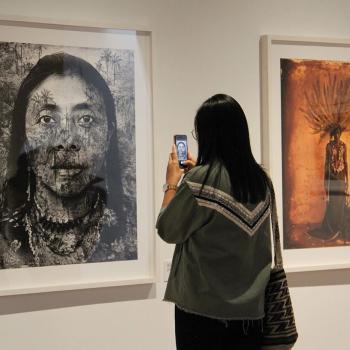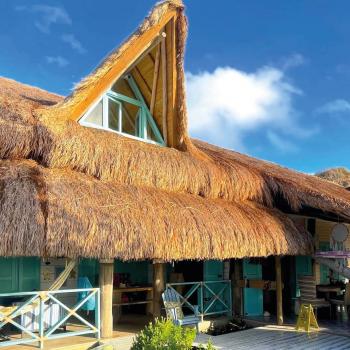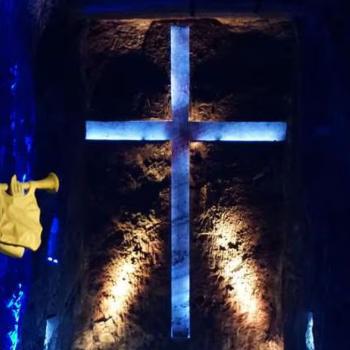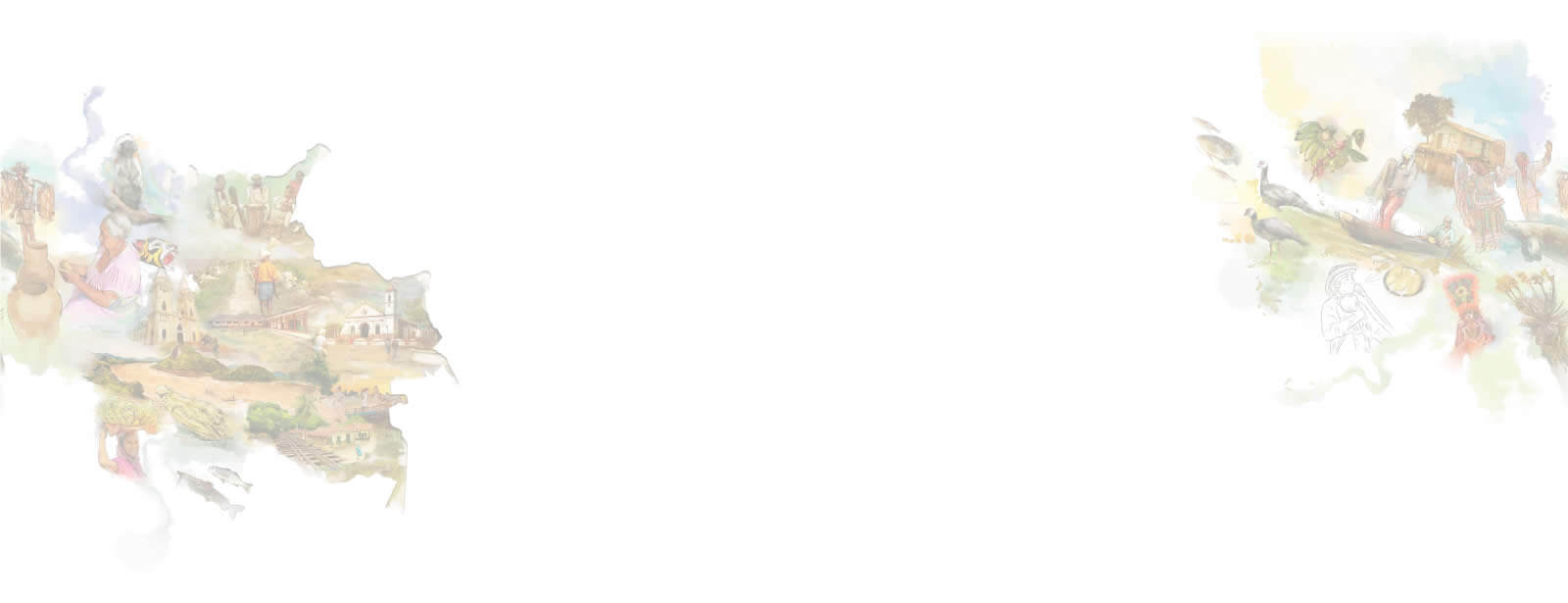Colombia, the country of beauty, stands as a unique destination for spiritual and religious tourism. Here, the fusion of Catholicism with the indigenous beliefs predating the Spanish arrival has shaped traditions, resulting in a rich tapestry of celebrations and festivities that draw both locals and foreigners.
The imprint of Catholicism on Colombia is evident in its material life and architectural marvels. From Gothic to Neoclassical styles, churches and cathedrals dot the Colombian landscape, not just as witnesses to faith but also as architectural milestones reflecting centuries of evolution.
Embark on a journey through the cultural legacy of Colombia, traversing diverse routes and destinations across the country's six regions. Immerse yourself in religious and traditional celebrations, each offering a unique glimpse into Colombia's rich tapestry.
Routes Of Faith in the Greater Colombian Caribbean
Mompox

Nestled along the Magdalena River and considered one of the most beautiful places in Colombia, declared a UNESCO World Heritage Site, Mompox stands out during Holy Week as its residents unearth treasures to adorn the figures of saints parading in the processions. Include in your itinerary the Church of the Immaculate Conception, the Church of Santa Bárbara, the Church of Santo Domingo, and the Church of San Juan de Dios.
Santa Marta
As South America's oldest city, Santa Marta showcases architectural gems like the Cathedral of Santa Marta, the Parish of San Jerónimo de Mamatoco, the first mainland chapel, and the Convent of Santo Domingo. The festivities of San Agatón in Mamatoco every February are a highlight.
Just over two hours from Santa Marta lies Ciudad Perdida Teyuna, in the Sierra Nevada de Santa Marta, a prominent archaeological site. Immerse in the spiritual richness of indigenous cultures, as the area preserves the remnants of an ancient city built by the Tayrona people around the 8th century. Today, the site is protected by the Kogui, Wiwa, Arhuaco, and Kankuamo communities. Explore a diverse range of spiritual and wellness tourism while engaging with the richness of the region.
Cartagena de Indias
With colonial architecture and protective walls, Cartagena is a premier tourist destination. The Cathedral of Santa Catalina de Alejandría and the Church of San Pedro Claver showcase the city's architectural grandeur. Don't miss the Feast of the Virgin of La Candelaria from January 24th to February 2nd.
Recommended destinations: La Guajira, Sucre, and Cesar
Here are some religious festivals that are fervently celebrated:
- Festivities of Our Lady of the Remedies in Riohacha.
- The Pardon Festival in San Benito Abad, Sucre.
- Celebrations in Valledupar include The Holy Ecce Homo Procession and the Corpus Christi festivities in Atánquez.

Routes Of Faith in the Colombian Pacific
Cali

One of the most emblematic cities of the Colombian Pacific has churches dating back to the colonial era, each holding significant architectural and historical value: Church of La Merced, Cathedral of San Pedro, Church of San Fernando Rey, and the Religious Complex of San Francisco, which are prominent stops on Cali's church circuit. The city is also home to a religious and colonial museum safeguarding 350 pieces of religious art and other colonial artistic expressions. For a panoramic view of Cali, the Chapel of San Antonio, located on the hill with the same name, is the ideal spot.
Guadalajara de Buga
This town in Valle del Cauca has a profound religious heritage. Buga houses the Basilica of Our Lord of Miracles, a majestic temple granted the title of Basilica in 1937 by Pope Pius XI due to the numerous miracles and pilgrims it attracts annually. Founded during 1907, it is the main setting for the Feast of Our Lord of Miracles on September 14th. The image of the Holy Redeemer, a 2.5-meter-tall cast-iron (8.2 ft.) statue, draws over 1.1 million devotees each year.
Quibdó, Cértegui y Tadó
- Quibdó stands out for its rich oral tradition. The celebration in honor of San Francisco de Asís during the San Pacho Festivals is a spectacle of devotion declared Intangible Cultural Heritage by UNESCO. The Cathedral of San Francisco de Asís is a monument reflecting the history of the predominantly Afro-Colombian and Emberá Katío indigenous population of Quibdó.
- Cértegui houses the Church of the Virgin of Candelaria, celebrating its festivities in February.
- Tadó features the famous Church of San José de Tadó, a national monument built in wood and covered in tinplate.
Must experience: The alabaos and gualíes

On the Pacific Coast, communities engage in funeral rites through alabaos and gualíes. These traditional chants blend Hispanic and African heritage, serving as spaces of solace and bond-building during wakes. Alabaos, dedicated to God and Jesus Christ, and gualíes, used in wakes for children under twelve, have been part of the National Cultural Heritage since 2015.
Routes Of Faith in the Western Colombian Andes
Medellín
The imposing Metropolitan Cathedral Basilica of the Immaculate Conception in Medellín is the largest brick-built cathedral in Latin America and was declared a National Monument in 1982. The Basilica of Our Lady of Candelaria has a history dating back to 1649, being the city's first parish. Meanwhile, the Sanctuary of Mother Laura offers a glimpse into the life and work of Saint Laura Montoya, the first Colombian recognized as a saint by the Catholic Church.
Jericó
The birthplace of Saint Laura not only encapsulates the essence of the first Colombian saint, but also features the Museum of Religious Art and the imposing Cathedral of the Virgin of Mercy. If you seek alternative spiritual approaches, the Ashram Vanadurga in eastern Antioquia provides an option through yoga retreats, an oasis of harmony with nature.
Surroundings of Medellín
Here are some centers of devotion you can visit if you are in the capital of Antioquia:
- The Church of Our Lady of Chiquinquirá in Angostura.
- The Cathedral of Our Lady of the Rosary in Girardota.
- The Parish of Santa Ana of María Auxiliadora in Sabaneta.
- The Minor Basilica of the Immaculate Conception in Jardín, known for its dark bricks.
- Significant temples like the Metropolitan Basilica of the Immaculate Conception and the Temple of Jesus of Nazareth in Santa Fe de Antioquia.
- The famous Chapel of Jesus of Nazareth in Marinilla, where the Sacred Music Festival also takes place.
Coffee Cultural Landscape
In Pereira, children participate in overseeing the Holy Week celebrations, while in Neira (Caldas), a figure of Judas is burned as a symbol of reconciliation. In Manizales, the Cathedral Metropolitan Basilica of Our Lady of the Rosary, standing at 115 meters tall (377 ft.), offers a spiritual experience amid its imposing architecture and panoramic views.

In Quindío, the Church of the Sacred Heart in Armenia reflects the hard work of the faithful in its construction. Quimbaya, with its Festival of Candles and Lanterns on December 7th and 8th, lights up the streets in honor of the Virgin of the Immaculate Conception. In Valle del Cauca, the Sanctuary of the Divine Ecce Homo in Ricaurte is a place of pilgrimage due to the miracles attributed to "El Divino." The Basilica San Luis Gonzaga in Sevilla, honored as a minor basilica by the Holy See, bears witness to faith alongside the region's reputation for its coffee.
Routes Of Faith in the Eastern Colombian Andes
Bogotá

Perched at 3512 meters above sea level, Monserrate Hill is home to the Basilica Sanctuary of the Fallen Lord. Founded in 1640, it attracts millions of pilgrims. Access can be made through a modern cable car, a funicular, or a renovated pedestrian path. Besides its religious significance, it offers spectacular views of the city.
The Sanctuary of the Divine Child was built in 1937 and consecrated in 1942. This sanctuary is one of the most visited pilgrimage sites in Colombia. The Miraculous Image of the Divine Child, carved in reference to the Child God of Prague, attracts devotees both national and international.
Bogotá, with its colonial architecture, has become a religious destination par excellence. Among the most prominent churches are the Primatial Cathedral of Bogotá, the Church of La Veracruz, the Church of San Francisco, and the Church of the Sacred Heart of Jesus, also known as the Church of the National Vow.
Cundinamarca
The Sanctuary of Our Lady of Health in Bojacá preserves architectural elements from the colonial era. Its construction began in 1629, and inside, gilded carving works stand out. The image of the Miraculous Virgin of the Anguishes, dating from the 18th century, attracts pilgrims throughout the year.
Located 50 km (31 mi.) from Bogotá, the Salt Cathedral of Zipaquirá is an architectural gem. Built in a former salt mine, it stands as Colombia's First Wonder. The tour includes the Stations of the Cross, the dome, and a huge 16-meter (52.5 ft.) cross, all over 180 meters (590 ft.) underground.
Boyacá
- The city of Tunja stands out for its Holy Week celebrations. The Metropolitan Basilica Cathedral, built in 1567, and the Church of El Topo, Sanctuary of Our Lady of the Miracle, are part of the route.
- In the "Religious Capital of Colombia," you'll find the Church of Our Lady of the Rosary of Chiquinquirá, visited by Pope John Paul II in 1986.
- With its well-preserved colonial architecture, Villa de Leyva presents striking temples such as the Parish Church and the Church Sanctuary of Virgin of Carmen. Visit the Monastery of Holy Eccehomo and the Museum of Religious Art.

Norte de Santander
Holy Week in Pamplona, recognized for the devotion of its inhabitants, attracts devotees from all over. The Metropolitan Cathedral of Santa Clara, the Church of Our Lady of Carmen, the Santo Domingo Church, and the Sanctuary of the Lord of Humility are key points on your route. The Museum of Religious Art in the city complements the experience with its collection of sacred works.
Routes Of Faith in The Colombian Massif
Ipiales

Located just outside Ipiales, the Sanctuary of Our Lady of the Rosary of Las Lajas defies gravity by being embedded in the mountain, above the Guáitara River canyon. This architectural wonder, known as "God's miracle over the abyss," houses the image of Our Lady of the Rosary imprinted on a slate stone discovered in 1754. National and international pilgrims come year-round to pay homage to the Virgin and experience the majesty of the basilica, declared the most beautiful in the world in 2015 by 'The Telegraph.'
Popayán
In the "White City," Holy Week processions date back to 1556 and were recognized as a Masterpiece of the Oral and Intangible Heritage of Humanity by UNESCO in 2009. The historic center, with its white facades, is the setting for moving parades that highlight the devotion and tradition rooted in Cauca’s capital. The Cathedral Basilica of Our Lady of the Assumption, the Church of San Francisco, the Sanctuary of Belén, and the Temple of El Carmen, among others, are part of the route of this spiritual celebration.

Pasto
Holy Week becomes a mystical experience that merges faith and devotion. Founded in 1537 atop the Colombian Massif, Pasto stands as a testament to imposing temples and religious expressions. The Cathedral of Pasto, the Church of Christ the King, the Church of Santiago Apóstol, and the Parish Temple of San Agustín, erected after the earthquake of 1834, are landmarks that narrate the city's history.
Routes of Faith in The Colombian Amazon-Orinoco
In these lands, spirituality intertwines with nature. Here, you can participate in ancestral activities such as hydrotherapies, welcome ceremonies, and spiritual purifications. The chagras, traditional agricultural spaces, unfold like living books that tell stories of respect for the land. Explore indigenous malocas where the community gathers, creating a profound connection with their surroundings.
Immersion in the Amazon Forest reveals the importance of indigenous peoples' connection to the stars. Guided by the Jaguar constellation, these communities have developed systems of thought and religiosity over time. This feline symbolizes control, power, protection, fertility, and a connection with “Pachamama”: Mother Nature.
Vaupés
Home to the Tucanos and more than twenty ethnic groups between the Orinoco plains and the Amazon Forest. Here, travelers can delve into the cultural richness of these communities. From the Jirijirimo Rapids to the lush chagras, you can discover unexplored places and participate in ancestral ceremonies. Traditional dances and ancestral stories will transport you to a time when connection with nature was essential.
Some suggested travel agencies:

Now that you know more about where and how to celebrate religious and ancestral tourism in Colombia, we invite you to plan your visit and to don't miss out on the diverse activities that the country of beauty has to offer in each of its regions.























